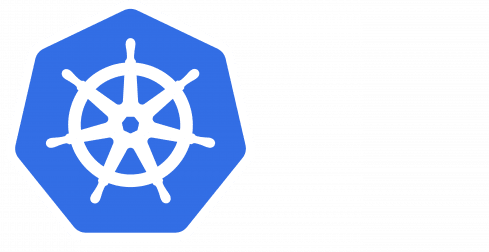We at Hivemind are passionate about helping our clients stay ahead of the curve in modern software development and deployment. That's why we believe infrastructure-as-code (IaC) and containerisation are the way to go in 2023. We help you leverage these powerful tools for more efficient development and deployment of your applications while also providing greater reliability, consistency, and scalability for your infrastructure.
[_The Advantages of IaC and Terraform.]
For any company that offers digital products or manages large amounts of in-house data, a reliable and consistent infrastructure to support the business is critical. That's why we at Hivemind embrace Infrastructure as Code (IaC) - and with it: Terraform. Terraform is a powerful tool to manage Infrastructure as Code. With Terraform, you can define and provision infrastructure resources across multiple cloud providers using a single language, making it easier to standardise and scale individual parts of your system. It allows you to rapidly provision resources, and automate deployment, reducing the risk of human errors.

[_Benefits at a glance.]
[_Automation of Infrastructure.] IaC enables the automation of infrastructure provisioning, configuration, and management processes, reducing manual efforts and human error.
[_Consistency Across Different Environments.] With IaC, infrastructure is defined as code, ensuring consistency across different environments, deployments, and teams. This eliminates configuration drift and minimises inconsistencies.
[_Scalability.] IaC allows for easy scalability by defining infrastructure components as code, making it simpler to replicate and expand infrastructure resources as needed.
[_Version Control.] IaC leverages version control systems to track and manage changes to infrastructure code, facilitating collaboration, rollback, and auditing.
[_Reproducibility and Disaster Recovery.] IaC provides the ability to recreate infrastructure environments exactly as they were defined, making it easier to troubleshoot issues, test configurations, and deploy consistent environments.
Terraform works perfectly in synergy with Kubernetes to streamline the deployment and management of cloud infrastructure and applications. Terraform's infrastructure as code capabilities enables the declarative provisioning of the underlying resources required for Kubernetes clusters.
[_A Short History of Kubernetes]

Google engineers began developing Kubernetes in 2014, and the goal was clear: the company's rapid growth required a powerful and scalable system capable of managing the infrastructure needed to serve the masses. At the time, Google had already been using container technologies for over a decade and had developed tools and processes for managing them at scale. Kubernetes was designed to combine many of these ideas into a single open-source platform that anyone could use.
Since its inception, Kubernetes has rapidly developed and attracted a large and active community of contributors. Due to its ease of use, flexibility and scalability, it has gained widespread acceptance in recent years and has established itself as one of the leading container orchestration systems.
Containerisation plays an integral role in modern software development. Although containerisation has been a concept since the early 2000s, it was only after the release of Docker in 2013 that it gained widespread adoption. With a standardised method for packaging applications and dependencies into portable containers, combined with Kubernetes, it enables containerised application orchestration and management at scale as well as seamless migration of applications across various cloud environments.
[_Benefits of Kubernetes at a glance.]
[_Scalability and High Availability.] Kubernetes is designed for scalability and high availability. It allows you to easily scale your services horizontally by adding or removing instances, ensuring your applications can handle increased traffic. Kubernetes also provides fault tolerance mechanisms and self-healing capabilities, automatically restarting failed components or rescheduling workloads on healthy nodes.
[_Cost Optimisation.] Optimise costs by leveraging Kubernetes' efficient resource management capabilities. You can scale your services based on demand, use auto-scaling features, and schedule workloads effectively to maximise resource utilisation. Managed services may have fixed or higher pricing models that may not be as cost-effective for certain workloads.
[_Ecosystem and Community.] Kubernetes has a thriving ecosystem with a large community of developers and contributors. Numerous tools, frameworks, and best practices are available to support your Kubernetes deployments. The community provides continuous improvements and updates, ensuring your infrastructure stays up to date with the latest advancements.
[_Operational Control.] Kubernetes provides extensive monitoring, logging, and observability features that give you deep insights into your applications and infrastructure. You can integrate popular monitoring tools like Prometheus, set up alerts, and troubleshoot issues effectively. Managed services may have limited visibility into the underlying infrastructure, making troubleshooting and monitoring more challenging.
[_Avoid Vendor Lock-Ins Through Portability.] Kubernetes provides a consistent platform abstraction layer that allows you to run your applications on any cloud provider or on-premises infrastructure. This portability enables you to avoid vendor lock-in and gives you the flexibility to choose the best infrastructure for your needs at any given time.
With our deep knowledge of Kubernetes, Terraform, and best practices, we help you design and implement solutions tailored to your specific needs. We always follow a best-practice approach and strive to create simple, efficient, and easy-to-maintain solutions.
We offer training and workshops to upskill your staff, enabling them to utilise Kubernetes and Terraform themselves effectively. By equipping your teams with the necessary skills and expertise, we foster a culture of self-sufficiency and continuous improvement within your organisation.





